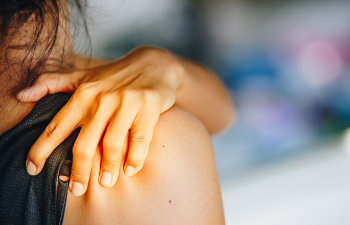Loose bodies in the shoulder joint, medically referred to as shoulder joint loose bodies or shoulder joint loose fragments, are small pieces of bone, cartilage or other tissue that have become detached and are floating freely within the joint space. These loose bodies can cause pain, inflammation, restricted movement and other symptoms, affecting the function and mobility of the shoulder. Understanding the causes, symptoms, diagnosis and treatment options for loose bodies in the shoulder joint is essential for proper management and relief of symptoms.
Causes of Shoulder Joint Fragments
Loose bodies in the shoulder joint can result from various underlying conditions, including:
- Osteoarthritis: Degenerative changes in the shoulder joint can lead to the formation of loose bone fragments due to the breakdown of cartilage and bone.
- Trauma: Acute injuries such as fractures, dislocations, or severe sprains can cause fragments of bone or cartilage to break off and become loose within the joint.
- Rotator Cuff Tears: Tears or damage to the rotator cuff tendons can cause inflammation and irritation within the joint, leading to the formation of loose bodies.
- Synovial Chondromatosis: A rare condition characterized by the growth of benign cartilage nodules within the joint lining, synovial chondromatosis can result in the formation of loose bodies.
- Degenerative Joint Disease: Chronic wear and tear on the shoulder joint, often associated with aging or repetitive overhead activities, can lead to the development of loose bodies over time.
Symptoms of Loose Bodie in the Shoulder
The presence of loose bodies in the shoulder joint can cause a range of symptoms, including:
- Pain: Persistent or intermittent pain in the shoulder joint, which may worsen with movement or activity.
- Decreased Range of Motion: Difficulty moving the shoulder joint fully, with stiffness or limitations in certain directions.
- Swelling: Swelling or inflammation around the shoulder joint, often accompanied by warmth and tenderness.
- Catching or Locking Sensation: Sensations of catching, locking or grinding within the shoulder joint during movement.
- Weakness: Weakness or instability in the shoulder, particularly when lifting or carrying objects or performing overhead activities.
Diagnosing loose bodies in the shoulder joint typically involves a combination of medical history, physical examination and imaging studies. This includes gathering information about the onset, duration, and characteristics of symptoms, as well as evaluating shoulder mobility, strength, stability and signs of inflammation or tenderness. Utilizing imaging techniques such as X-rays, magnetic resonance imaging (MRI), or computed tomography (CT) scans to visualize the internal structures of the shoulder joint can identify any loose bodies or associated abnormalities.
Loose Bodies in the Shoulder Treatment
Treatment options for loose bodies in the shoulder joint depend on the underlying cause, severity of symptoms and individual patient factors. Conservative treatments may include:
- Rest and Activity Modification: Avoid activities that exacerbate symptoms and allow the shoulder joint to rest and heal.
- Physical Therapy: Performing targeted exercises to improve shoulder strength, flexibility, and range of motion, as well as modalities to reduce pain and inflammation.
- Medications: Nonsteroidal anti-inflammatory drugs (NSAIDs), corticosteroid injections, or other pain-relieving medications may be prescribed to alleviate symptoms.
- Immobilization: Using a sling or brace to immobilize the shoulder joint and promote healing in cases of acute injury or inflammation.
In cases where conservative treatments fail to provide adequate relief or if loose bodies are causing significant pain, dysfunction or structural damage, surgical intervention may be recommended. Surgical options may include arthroscopic debridement, during which the loose bodies are removed arthroscopically using small incisions and specialized instruments, or open surgical procedures in more complex cases.
Loose bodies in the shoulder joint can cause pain, inflammation, and restricted movement, impacting the function and mobility of the shoulder. If you have symptoms of loose bodies in the shoulder joint, it is vital to seek diagnosis and treatment from an orthopedic surgeon who specializes in shoulder joint conditions. Contact the office of Steven Struhl, MD – AC Joint Separation in NYC or Winchester, NY, to schedule a joint pain consultation.
Posted on behalf of Steven Struhl MD





